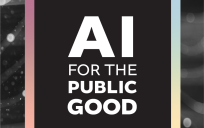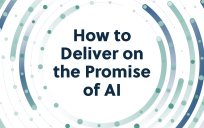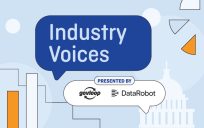Imagine getting your passport renewal approved in hours instead of weeks, or having a chatbot resolve your tax question without a 40-minute phone wait and four transfers. Sounds magical, right? It’s not magic — it’s artificial intelligence (AI).

Government agencies across the federal, state and local levels are exploring how artificial intelligence can streamline public service delivery, reduce backlog, and make government more accessible to those who need it most. But before you start fearing a robot-led department of motor vehicles, here’s a closer look at how agencies are responsibly turning smart ideas into real impact.
The Use Cases: Smarter Services, Better Outcomes
One of the most common applications of AI in public service is through natural language processing (NLP). Think: chatbots that help citizens apply for benefits or navigate complex healthcare systems without relying on overburdened staff.
For instance, the Centers for Medicare and Medicaid Services (CMS) has piloted AI-driven customer assistance tools that understand and respond to inquiries in real time, improving response speed while maintaining accuracy.
Other use cases include:
- Predictive analytics in child welfare services to flag at-risk cases earlier.
- AI-based image recognition to assess infrastructure damage after natural disasters.
- Machine learning models used by Housing and Urban Development to identify housing fraud patterns.
From Pilot to Production: What Makes It Work?
Let’s be clear: Not every AI project makes it past the shiny prototype stage. The difference between buzzword and benefit often lies in four key factors:
- Clear Problem Definition — AI should solve a real-world pain point, not just check a tech box.
- Cross-Functional Collaboration — Successful implementations bring together IT, legal, frontline staff, and service users.
- Data Preparedness — If your data’s a mess, your AI will be too. Clean, accessible and ethical datasets are a must.
- Governance and Evaluation — Regular audits, ethical reviews, and model retraining help keep things accurate — and fair.
Watch Out: Pitfalls and Potholes
AI may be brilliant, but it’s not perfect. Over-automating without proper oversight can lead to biased decisions, inaccessible services, or even digital exclusion. Case in point: if your chatbot can’t handle non-English speakers or residents with disabilities, it’s not serving equitably.
Public trust can erode quickly if these tools aren’t transparent, explainable, and human-centered. As the GAO and NIST frequently point out, responsible AI in government must go hand-in-hand with strong oversight (GAO, NIST)
Final Thoughts
The next time you hear “AI in government,” don’t roll your eyes — raise your expectations. From license processing to benefits navigation, agencies are showing how thoughtful AI can serve the people, not replace them.
Sure, the robots are helping. But it’s the humans behind them who are making it work — with strategy, oversight, and just the right mix of skepticism and boldness.
Dr. Rhonda Farrell is a transformation advisor with decades of experience driving impactful change and strategic growth for DoD, IC, Joint, and commercial agencies and organizations. She has a robust background in digital transformation, organizational development, and process improvement, offering a unique perspective that combines technical expertise with a deep understanding of business dynamics. As a strategy and innovation leader, she aligns with CIO, CTO, CDO, CISO, and Chief of Staff initiatives to identify strategic gaps, realign missions, and re-engineer organizations. Based in Baltimore and a proud US Marine Corps veteran, she brings a disciplined, resilient, and mission-focused approach to her work, enabling organizations to pivot and innovate successfully.





Leave a Reply
You must be logged in to post a comment.